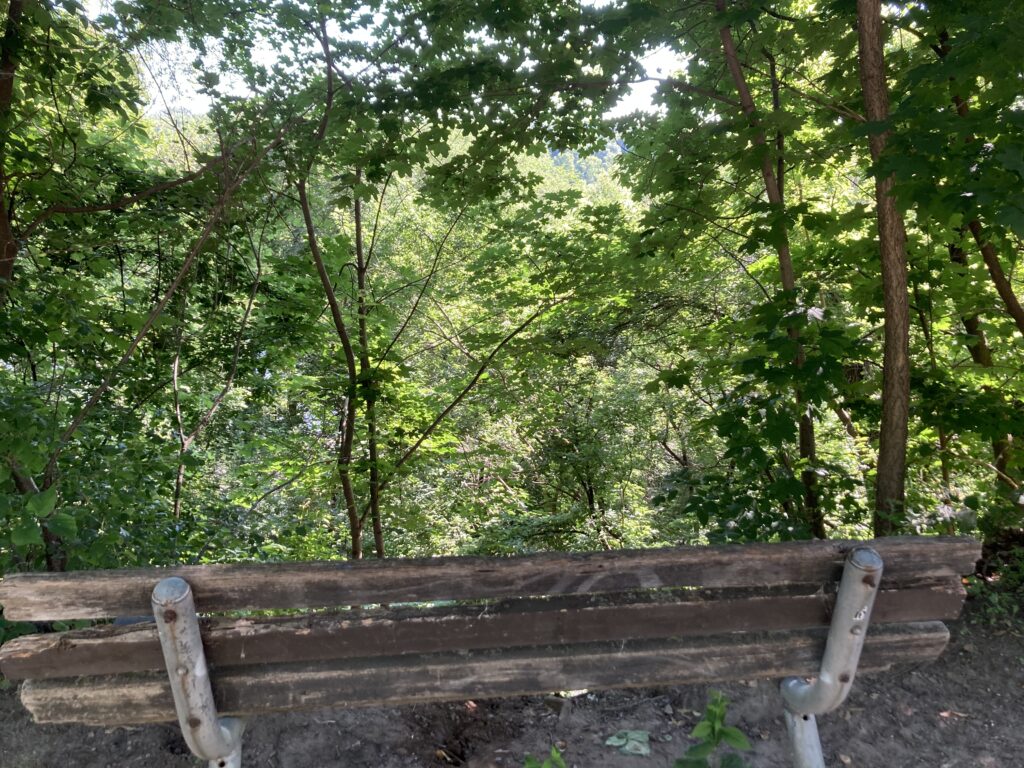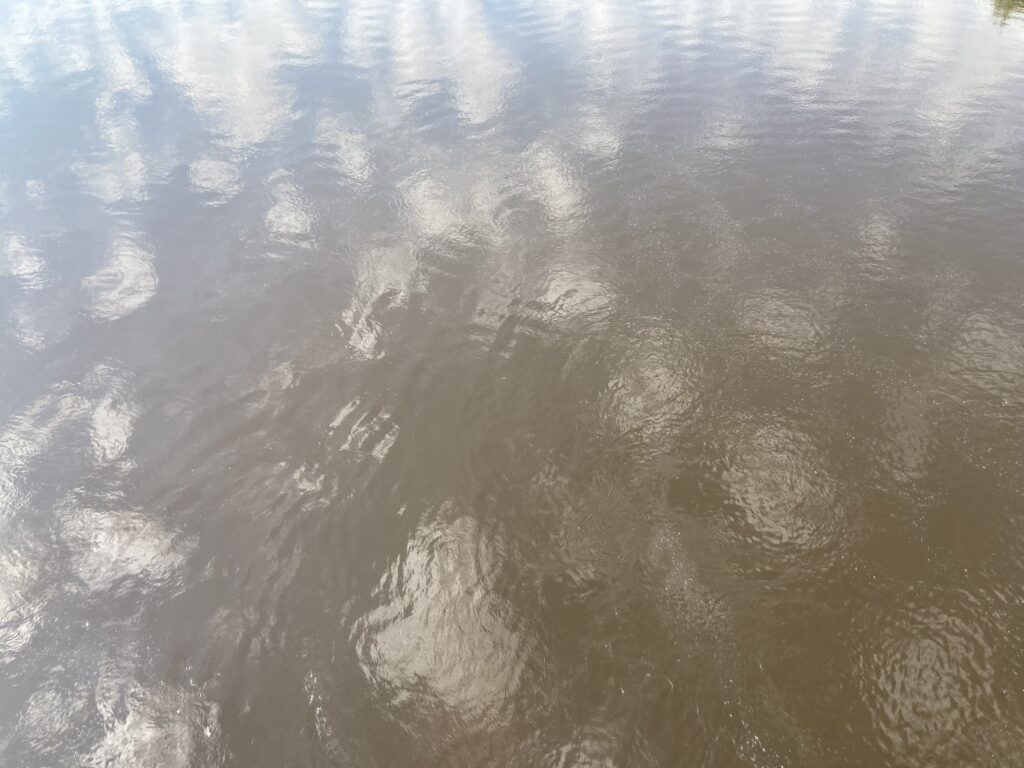3.1 miles
2 trails
72 degrees
dew point: 70
8 a.m. and already 72. It’s going to be hot today. Heard some birds and the coxswain and water trickling, then dropping steadily. The river was pale blue through the trees. When I heard the rowers I wondered how hot they were on the water without any shade.
overheard: an adult runner to a kid biking behind them — you’re doing such a good job!
Wore my bright yellow shoes — the ones I bought over a year ago and have tried to wear several times but always give up because they hurt my feet and my calves. They seem to be working now.
10 Things
- purple flowers just beyond the fence
- blue sky
- empty bench
- a roller skier holding their poles up instead of using them
- noisy birds near the tree that fell a few days ago onto the winchell trail
- a small circle of shimmer: sparkling water seen through a gap in the trees
- several stones stacked on the ancient boulder
- a small group of bikers — 4, I think — speeding past, one of them wearing a bright pink shirt
- a women with a dog stepping off the path near the bench above “the edge of the world”
- faint lines of yellow and orange and pink and purple chalk on the 38th street steps
orbit
This morning, another orbit around an idea that I’ve been orbiting for a few years now:
1
He aligns himself and moves forward with his face in the water staring down at the bottom of the lake. Old, beautiful shadows are wavering steadily across it. He angles his body and looks up at the sky. Old, beautiful clouds are wavering steadily across it. The swimmer thinks about symmetries, then rotates himself to swim on his back staring at the sky. Could we be exactly wrong about such things as—he rotates again—which way is up? High above him he can feel the clouds watching his back, waiting for him to fall toward them.
The Anthropology of Water/ Anne Carson
Which way is up? Which way down? Which real? Imagined? Symmetries or similarities?
2
I began more seriously than ever to learn the names of things—the wild plants and animals, natural processes, local places—and to articulate my observations and memories. My language increased and strengthened, and sent my mind into the place like a live root-system. And so what has become the usual order of things reversed itself with me: my mind became the root of my life rather than its sublimation. I came to see myself as growing out of the earth like the other native animals and plants. I saw my body and my daily motions as brief coherences and articulations of the energy of the place, which would fall back into the earth like leaves in the autumn.
Native Hill/ Wendell Berry
Brief coherences and articulations of the energy of the place.
3
Reading Berry, I’m reminded of Arthur Sze’s discussion of mushrooms as poems:
I began to think I love this idea that the mycelium is below the surface. It’s like the subconscious, then when the mushroom fruits pops up above ground, maybe that’s like this spontaneous outpouring of a poem or whatever.
4
Then, I returned, as I often do, to the beginnings of a poem:
Maybe like mushrooms, we rise
or not rise, flare —
brief bursts from below
then returns
to swim in the dirt…
5
Could we be more like fungi/mushrooms, with their nets of mycellium, than trees with their roots and branches and one trunk? Googled it: Animals and fungi are each other’s closest relatives: congruent evidence from multiple proteins
6
And back to W. Berry and the reversing of wild and domestic:
VI.
our word “domestic” comes from the Latin domus, meaning “house” or “home.” To domesticate a place is to make a home of it. To be domesticated is to be at home.
X.
But if we were really to pay attention to what we’ve been calling “wilderness” or “the wild,” whether in a national park or on a rewooded Kentucky hillside, we would learn something of the most vital and urgent importance: they are not, properly speaking, wild.
XI.
Our overdone appreciation of wildness and wilderness has involved a little-noticed depreciation of true domesticity, which is to say homemaking, homelife, and home economy.
XII.
With only a little self-knowledge and a little sitting still and looking, the conventional perspective of wild and domestic will be reversed: we, the industrial consumers of the world, are the wild ones, unrestrained and out of control, self-excluded from the world’s natural homemaking and living at home.
swim: 3 loops
lake nokomis open swim
90 degrees
Another great swim! Felt strong — no strange calf pain, or feet that feel like they might start cramping, or fear over not seeing buoys. The water was warm and green. The sky was blue with a few clouds. No dragonflies or planes or menacing swans, although there was a lurking sailboat. The far green buoy still looked blue to me, when I could see it as having color. Often it looks like a white dot, or just a colorless dot that I understand as buoy.
I saw pale legs and green globs and a vague orangish red light and sparkle friends and bubbles and ghostly milfoil underwater. No ducks or fish or seagulls. For the last stretch of each loop, I recited the lines from Alice Oswald’s Dart that I just memorized:
1
Then I jumped in a rush of gold to the head,
through black and cold, red and cold, brown and warm,
giving the water the weight and size of myself in order to imagine it,
water with my bones, water with my mouth and my understanding
2
He dives, he shuts himself in a deep soft-bottomed
silence
which underwater is all nectarine, nacreous. He lifts
the lid and shuts and lifts the lid and shuts and the sky
jumps in and out of the world he loafs in.
Far off and orange in the glow of it he drifts
Such great lines that feel familiar when I’m swimming in the middle of the lake.

